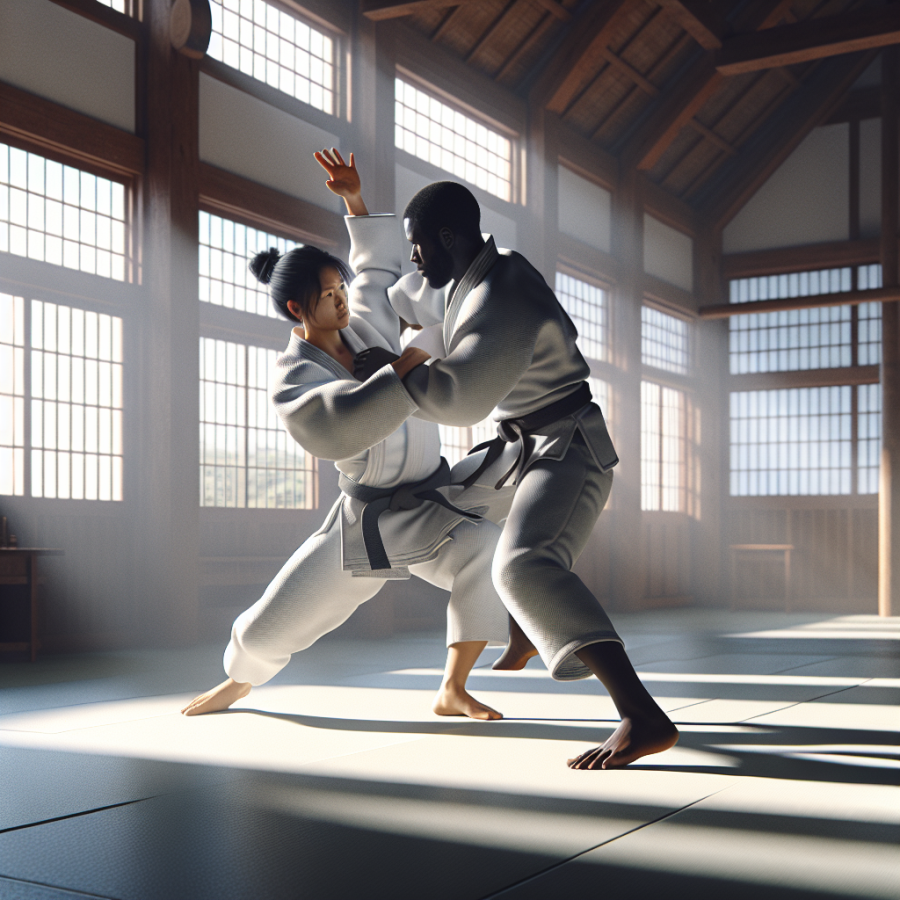Implementing Judo Techniques: A Breakdown for Beginners and Experts alike
Judo, a dynamic and modern martial art which originated from Japan, is a popular discipline that combines physical strength, agility, and intellectual prowess. Understanding its techniques often requires an exploration of the philosophy guiding them. Here, we delve into the various techniques of Judo, from basic to more complex moves, and how to implement them effectively.
Judo techniques are essentially categorized into three types: Nage-waza (throwing techniques), Katame-waza (grappling techniques), and Atemi-waza (striking techniques). For beginners and experts alike, these techniques can be efficiently executed with the correct knowledge.
Nage-waza or throwing techniques are the hallmark of Judo. These techniques require one to destabilize the opponent's balance before executing a successful move. For beginners, mastering the basic throwing techniques such as Osoto Gari (major outer reap) or Ippon Seoi Nage (one-point shoulder throw) is crucial. As for advanced judoka, techniques such as Uchi Mata (inner thigh throw) or Harai Goshi (sweeping hip throw) may be employed for a quicker, more dominating win.
Katame-waza, the grappling techniques, involve groundwork which includes controlling the opponent by pinning them, executing a stranglehold or using joint manipulation. Beginners can start with Kesa Gatame (scarf hold) or Yoko Shiho Gatame (side four-corner hold) to neutralize opponents. More experienced judokas may implement advanced moves such as Sankaku Jime (triangle choke) or Ude Hishigi Juji Gatame (cross lock) to immobilize their adversaries.
Atemi-waza, the striking techniques, are used mostly for self-defense in real-world scenarios rather than tournament practice, as they can cause serious injury to opponents. These techniques involve strikes to vulnerability points to incapacitate an attacker usually by means of a punch, kick or knee strike.
Proper breathing and relaxation are essential elements when executing these techniques. A quick exhalation during the execution phase increases power and maintains balance. Mental preparation and focus are fundamental, particularly when learning complex throws or grappling techniques.
The practice of Judo demands complete control over body and mind, patience, and resiliency. It's more than just about winning a duel; it’s about learning how to pull back, wait for the right moment, and use the power of leverage and timing to implement the right technique.
Read also:
Understanding if and How Golf Cart Batteries Freeze: Essentials For Golf Enthusiasts
Understanding the Physicality and Philosophy behind Judo
Judo, a traditional martial art originating from Japan, is more than just an assemblage of combative techniques used for self-defense. It encapsulates an amalgam of physicality and philosophy that to practitioners, is a way of life.
The Physical Aspect
The physical dimension of Judo transcends beyond mere fighting tactics– it implicates an all-encompassing regimen of physical training and maintaining health. Integral to the practice of Judo, is the tacit obligation to maintain one's physical fitness, which helps not only in mastering the sport but also in leading a healthier lifestyle.
The martial art emphasizes dynamic movement, agility, and strength. Many Judo trainees undergo heavy physical conditioning to build stamina and master body control. The techniques employed in Judo–the throws, the ground grappling, and the locks–all necessitate a coordinated interaction of muscles, joint flexibilities, and core stability.
Moreover, regular Judo training increases cardiovascular endurance, boosts muscular strength, and enhances flexibility and balance. The explicit physical demands of the sport contribute to increased resilience and dynamic physical health. However, the physical aspect is just one facet of Judo’s extensive paradigm.
The Philosophical Aspect
Judo's philosophy is primarily anchored in personal betterment and a harmonious existence within one's society. Two essential principles underpin Judo's philosophical framework: Seiryoku Zen'yo (maximum efficiency, minimum effort) and Jita Kyoei (mutual welfare and benefit).
Seiryoku Zen'yo suggests that every action should employ the most efficient means possible. In the Judo context, this principle implies that a smaller individual can defeat a bigger adversary by leveraging their momentum and energy. On a metaphorical level, Seiryoku Zen'yo nudges Judokas (Judo practitioners) to approach life's challenges intelligently and not merely with brute force.
Jita Kyoei underscores the importance of mutual respect, beneficence, and cooperation within the Judo community. Judo is not just about individual prowess but the collective growth of every Judoka. Judo practitioners are taught to respect their opponents, understand their capabilities and limitations, and help them grow. These virtues are deemed essential for fostering a cooperative and harmonious society.
Judo: A Unified Embodiment
The integration of these physical and philosophical facets breathes life into the soul of Judo. This harmonious blend in Judo guides the practitioner's journey towards personal and societal improvement.




